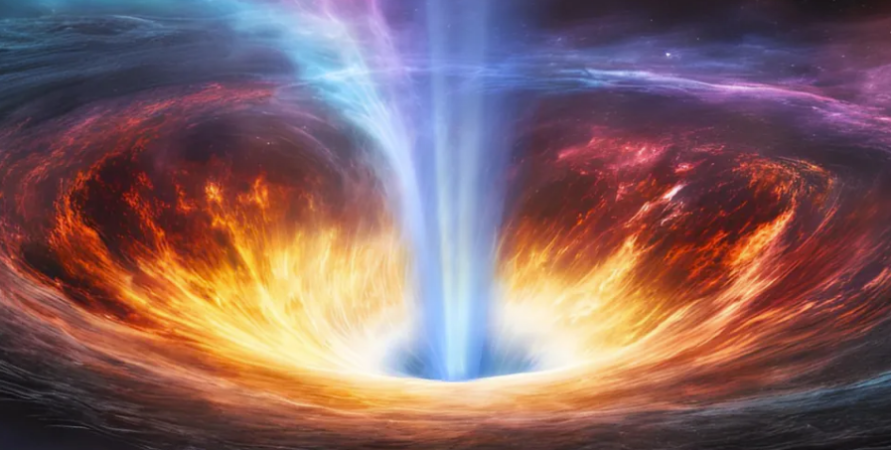A cosmic anomaly discovered in a remote galaxy may hint at a dangerous future for life in the Milky Way and suggests current models of galactic evolution could be flawed.
Astronomers have observed a supermassive black hole erupting with colossal jets from a spiral galaxy structurally similar to the Milky Way. This galaxy, 2MASX J23453268−0449256 (J2345-0449), is not only three times larger than the Milky Way but also contains significantly more dark matter, implying a potential link between black hole activity and dark matter abundance.
The jets, measuring 6 million light-years in length, emanate from a black hole weighing up to 1.4 billion solar masses. These jets rival the largest ever recorded and are rare in spiral galaxies, which typically lack such extreme emissions. Most examples of such vast jets—like Porphyrion’s 23 million light-year expulsion—are found in elliptical galaxies.
Lead researcher Joydeep Bagchi of CHRIST University emphasized the significance of this event, urging a reexamination of how galaxies and supermassive black holes evolve. The persistence of J2345-0449's spiral structure despite such violent central activity challenges assumptions that such forces would destroy a galaxy’s arms.
Even more puzzling, the galaxy is surrounded by a vast gas halo that, instead of forming new stars, is heated by the black hole into emitting X-rays—preventing star formation and creating an environment potentially hostile to life due to cosmic rays, gamma rays, and high-energy X-rays.
Comparatively, Sagittarius A* (Sgr A*), the Milky Way’s supermassive black hole, is relatively small—about 4.3 million solar masses—and currently dormant. However, it could one day consume a gas cloud or star in a tidal disruption event (TDE), potentially triggering jets similar to those seen in J2345-0449.
If a jet from Sgr A* were directed at Earth, the radiation could strip planetary atmospheres and damage DNA, possibly leading to mass extinctions. Even misaligned jets could heat the interstellar medium and stifle star formation.
There’s also a profound dark matter dimension: J2345-0449 holds around ten times more dark matter than the Milky Way. This supports its high spin rate and structural integrity, leading researchers to suspect a connection between dark matter, galaxy stability, and black hole activity.
This is the first time such a relationship has been proposed, potentially marking the beginning of a new scientific frontier.
As Shankar Ray, also from CHRIST University, concluded, understanding these exceptional galaxies could provide insights into the universe's hidden forces, dark matter's nature, galactic destiny, and even life's origins. The findings were published in the Monthly Notices of the Royal Astronomical Society on March 20.

